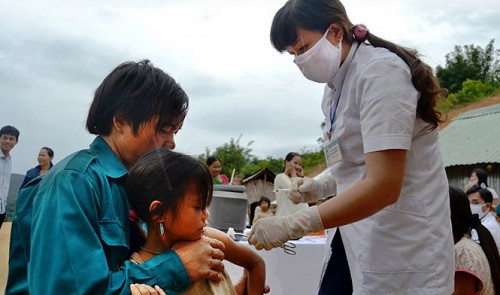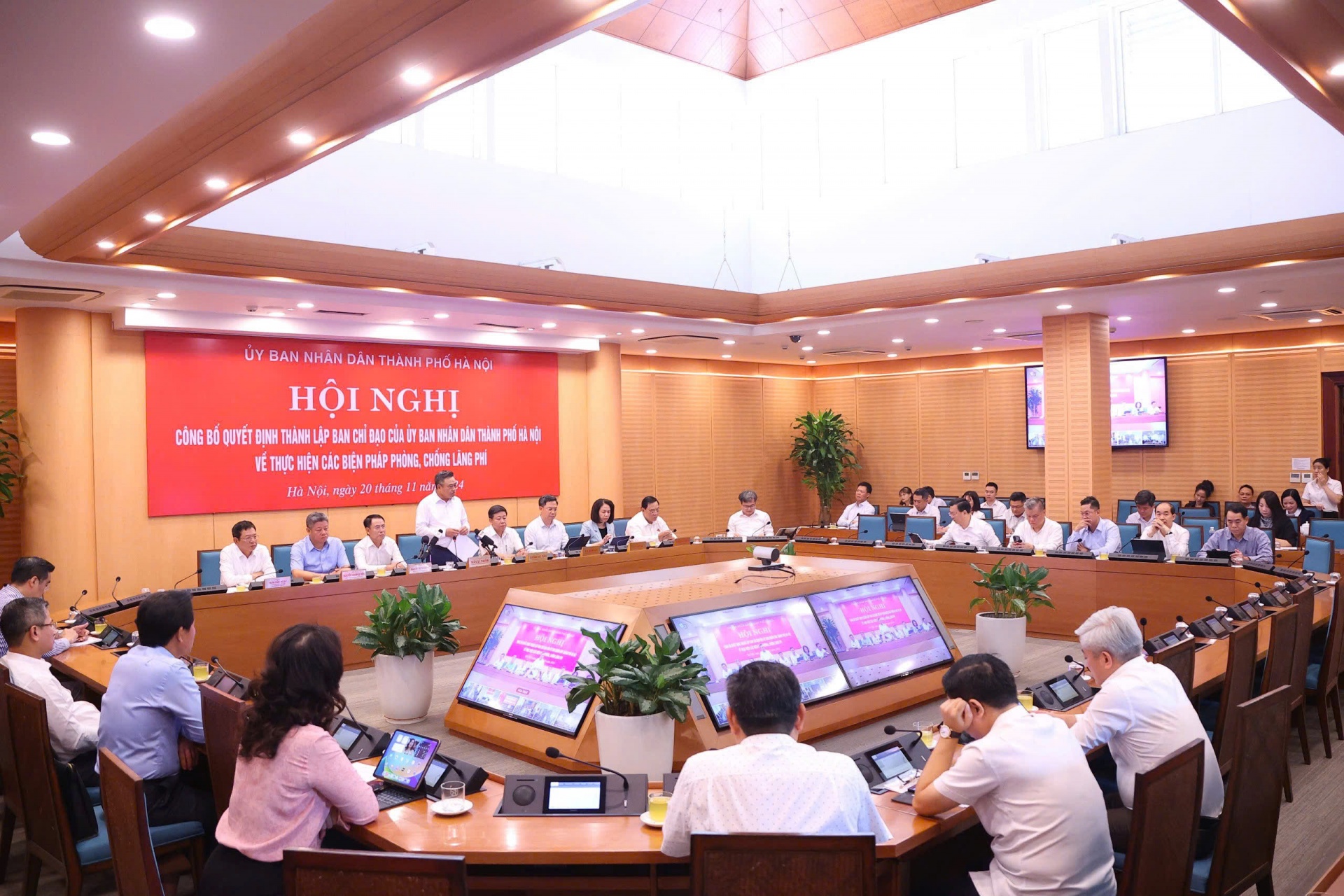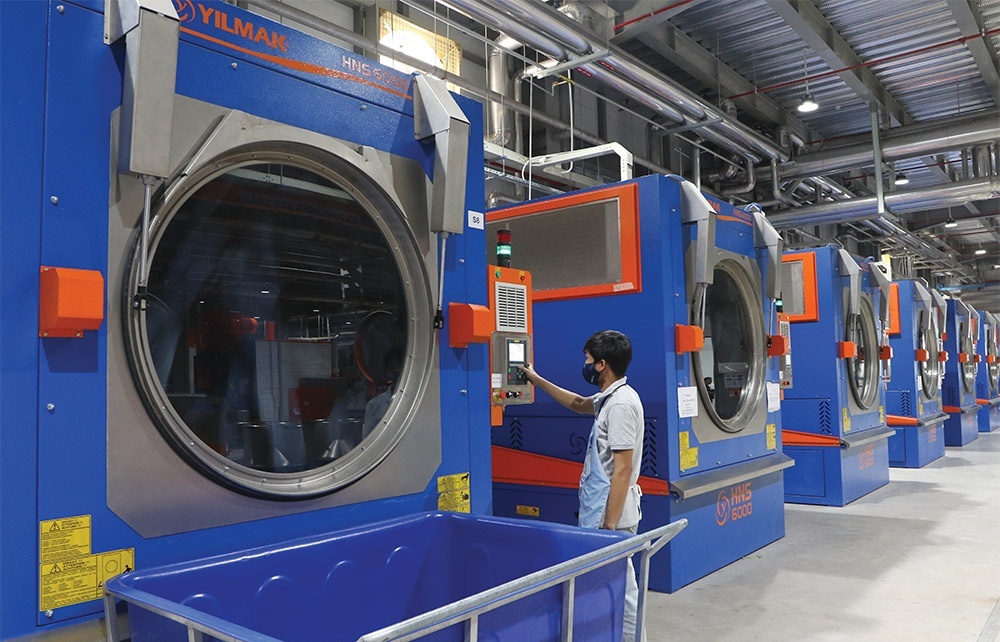Vietnam’s preventative medicine sector lacks workforce, investment

It is universally known that sufficient investment in preventative medicine will lower the number of diseases and infection cases, limit health treatment costs, and thus improve community health.
But in reality, Vietnam’s spending on preventative medicine accounts for just 16 percent of the total investment in the health care sector, according to a recent survey conducted by the Preventative Medicine Department under the Ministry of Health in 15 provinces.
The southern province of Dong Nai is an exception, as authorities earmarked nearly 50 percent of the total investment in the health care sector for preventative medicine, the findings showed.
The northern province of Lang Son spent 10 percent on preventative medicine.
In certain years, such provinces as Lang Son, Bac Ninh, and Son La in the north; and Kon Tum, Phu Yen, and Dak Lak in the central part invested only 3-7 percent in professional activities.
The law-making National Assembly rules that investment in preventative medicine must not be below 30 percent of the total funding for the health care sector.
In 2008, the rate of investment in preventative medicine was a mere 14.2 percent of the total, while it was 26.1 percent in 2009 and 25.7 percent in 2010.
Despite the low investment in preventative medicine, the actual expenses for professional activities are even lower than that because of a complicated administrative management system.
Lack of workforce
V.A., who has a bachelor’s degree in community health care, has worked for the division of disease control under the Preventative Medicine Center of Thanh Tri District in Hanoi for six years and is paid less than VND5 million (US$222) a month.
It is just half the income of those doctors holding same-level degrees and working for treatment units.
In addition, a doctor in charge of treatment can be allowed to open a clinic at home to earn extra cash, but a doctor in the preventative medicine discipline cannot.
A. said each professional officer engaging in the battle against the current dengue fever epidemic in Hanoi is given an allowance of VND2,000 (10 U.S. cents) for each household he/she covers but they must not do the job in over 25 houses per day.
That means a person earns an extra VND50,000 ($2.2) a day at the most.
Sometimes, a preventative health officer is given tips by officials in the locality they are working to combat a certain disease, but it is no more than VND100,000 ($4.4) a day.
In remote areas such as Nam Po District of the northern province of Dien Bien, preventative medicine professionals are working in more harsh conditions.
Nam Po has seven preventative medicine professionals who have to cover 15 mountainous communes.
During working trips, each of them is given an allowance of VND5,000 (22 U.S. cents) a day.
A report by the Central Preventative Medicine Department showed that preventative medicine centers at the district level now need to recruit 17,500 professionals and those centers at the provincial level need another 5,300.
The leader of the preventative medicine center of a district in Ho Chi Minh City spoke on condition of anonymity that his agency has been unable to recruit any doctor graduating from a university in the last eight years due to low salary.
It is estimated that it will take Vietnam ten more years to fill the gap of workforce in the field.
Vietnam will apply the U.S. model
The preventative medicine sector in Vietnam is suffering a lack of investment but keeping a bulky administrative management system, especially at province-level centers, said Pham Van Tac, head of the personnel department under the health ministry.
The preventative medicine sector at the provincial level is managing numerous agencies such as centers for food safety, centers for health and the environment, centers for malaria control and prevention, and centers for HIV/AIDS control.
Each center must have a director, some vice directors, accountants, administrative officers, and above all, an office building.
Tac added that Vietnam is trying to learn from the U.S. to build centers for disease control and prevention.
Many countries in the world are applying this model.
That is to merge all the centers that have similar functions into one to reduce administrative work and therefore increase the number of health care professionals.
What the stars mean:
★ Poor ★ ★ Promising ★★★ Good ★★★★ Very good ★★★★★ Exceptional
Latest News
More News
- Hanoi pilots electronic health record solution (November 10, 2024 | 12:25)
- Vietnamese consumer sentiment outperforms regional averages (November 08, 2024 | 18:00)
- Japfa Vietnam serves nutrition to 1,500 children to year-end (November 06, 2024 | 16:32)
- Tan Hiep Phat - three decades of serving society (November 04, 2024 | 17:58)
- Hanoi to restrict polluting vehicles across key districts (November 04, 2024 | 16:29)
- Hoan My Medical Group launches breast cancer screening to support community health (November 02, 2024 | 10:56)
- Vietnamese students explore the future at STEAMese Festival (October 28, 2024 | 16:55)
- Honouring ‘Green Warriors’ on Vietnamese Women’s Day (October 21, 2024 | 15:16)
- Swing for the Kids charity golf tournament kicks off (October 13, 2024 | 09:00)
- Swing for the Kids 2024 tees up opportunities for Vietnam's youth (October 12, 2024 | 10:00)




















 Mobile Version
Mobile Version